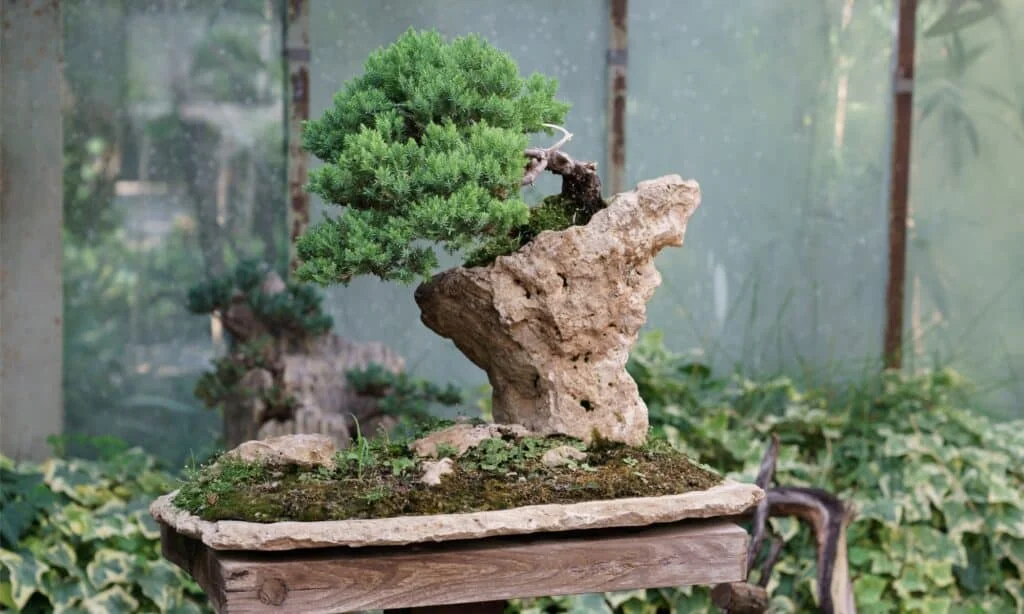Mastering the Art of Juniper Bonsai Trees for Beginners
As a beginner in the world of bonsai cultivation, few trees can match the beauty and charm of the juniper bonsai. With their delicate foliage, twisted trunks, and captivating shapes, these miniature trees can bring a sense of tranquility and natural elegance to any living space. In this comprehensive guide, we’ll explore the rewarding journey of cultivating and caring for a healthy juniper bonsai tree. So providing you with the essential knowledge and practical tips to embark on this exciting hobby.
Understanding Juniper Bonsai Trees
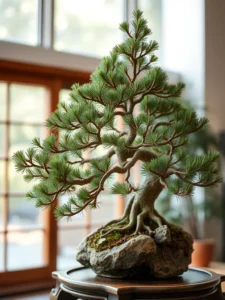
Juniper bonsai trees belong to the Juniperus genus and are renowned for their versatility and resilience. These evergreen conifers come in various species, each with its unique characteristics and growth habits. While some varieties, like the Juniperus procumbens, are known for their spreading, cascading forms. Others, such as the Juniperus rigida, boast an upright, columnar shape.
One of the significant benefits of cultivating juniper bonsai trees is their ability to thrive in both indoor and outdoor environments. And making them accessible to bonsai enthusiasts with varying living situations. However, it’s important to note that these trees require proper care and attention to maintain their health and aesthetic appeal.
Choosing the Right Juniper Species
When selecting a juniper species for your bonsai tree, it’s crucial to consider factors such as growth rate, ultimate size, and personal preferences. Here are some popular juniper varieties and their characteristics:
- Juniperus procumbens (Japanese Garden Juniper): A low-growing, spreading species with delicate, scale-like foliage. making it ideal for cascading or semi-cascade styles.
- Juniperus rigida (Needle Juniper): Known for its upright, columnar form and prickly needles, this species is well-suited for formal upright or slanted styles.
- Juniperus chinensis (Chinese Juniper): A versatile species with various cultivars, ranging from low-growing to upright forms. As offering a wide range of styling possibilities.
When sourcing your juniper bonsai tree, look for reputable nurseries or online retailers that specialize in bonsai plants. Alternatively, you can start with a young nursery stock or collect a suitable specimen from the wild, ensuring you follow local regulations.
Proper Potting and Soil Requirements
Selecting the appropriate bonsai pot is crucial for the health and aesthetic appeal of your juniper bonsai tree. Look for a pot with excellent drainage holes and a size that allows for proper root development without being too constricting. Un-glazed ceramic or high-fired pots are ideal choices as they allow for better air exchange and water evaporation.
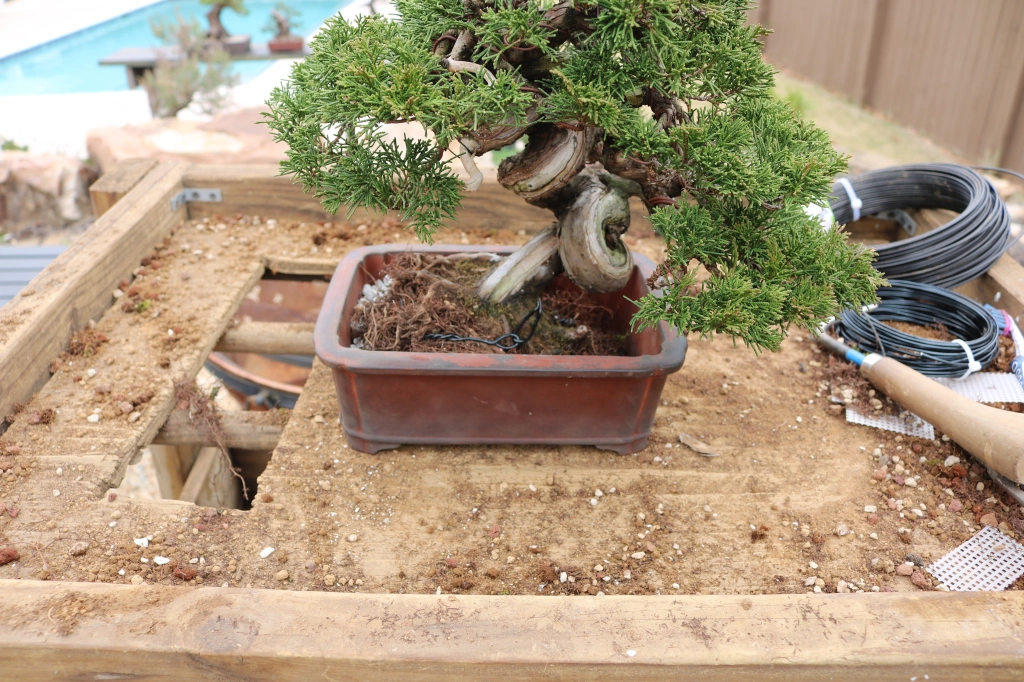
The soil mix for juniper bonsai trees should be well-draining and slightly acidic. A combination of equal parts of high-quality bonsai soil, akadama (a type of granular clay). And coarse sand or grit can provide the perfect growing medium. Reporting should be done every 2-3 years in the early spring, taking care not to damage the delicate root system.
Watering and Humidity Needs
Proper watering is essential for the well-being of your juniper bonsai tree. During the growing season (spring and summer), water your tree frequently. Making sure the soil is evenly moist but not waterlogged. In winter, reduce watering to prevent root rot or fungal issues.
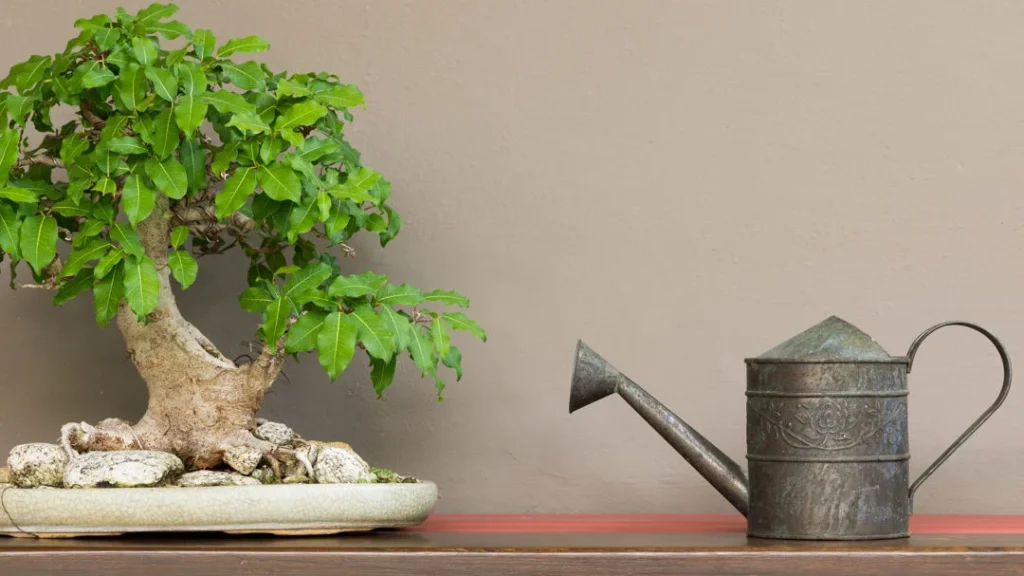
Juniper bonsai trees thrive in environments with moderate to high humidity levels. If you’re growing your tree indoors, consider using a humidity tray filled with pebbles. And water or invest in a small humidifier to maintain optimal humidity levels.
Light and Temperature Considerations
Juniper bonsai trees are sun-loving plants and require ample exposure to direct sunlight, preferably 4-6 hours per day. If grown indoors, position your tree near a south or west-facing window to receive maximum sunlight. During the summer months, it’s recommended to move your bonsai outdoors to a partially shaded area.
In terms of temperature, juniper bonsai trees prefer cooler conditions and can tolerate frost and light freezes. However, extreme cold or heat can damage the tree, so it’s essential to provide protection during harsh weather conditions. When temperatures rise above 90°F (32°C), move your tree to a shaded area or provide shade cloth to prevent heat stress.
Pruning and Shaping Techniques
Regular pruning and shaping are essential for maintaining the desired form and size of your juniper bonsai tree. Use sharp bonsai scissors or concave cutters to prune back unwanted growth, ensuring you make clean cuts just above the foliage clusters.
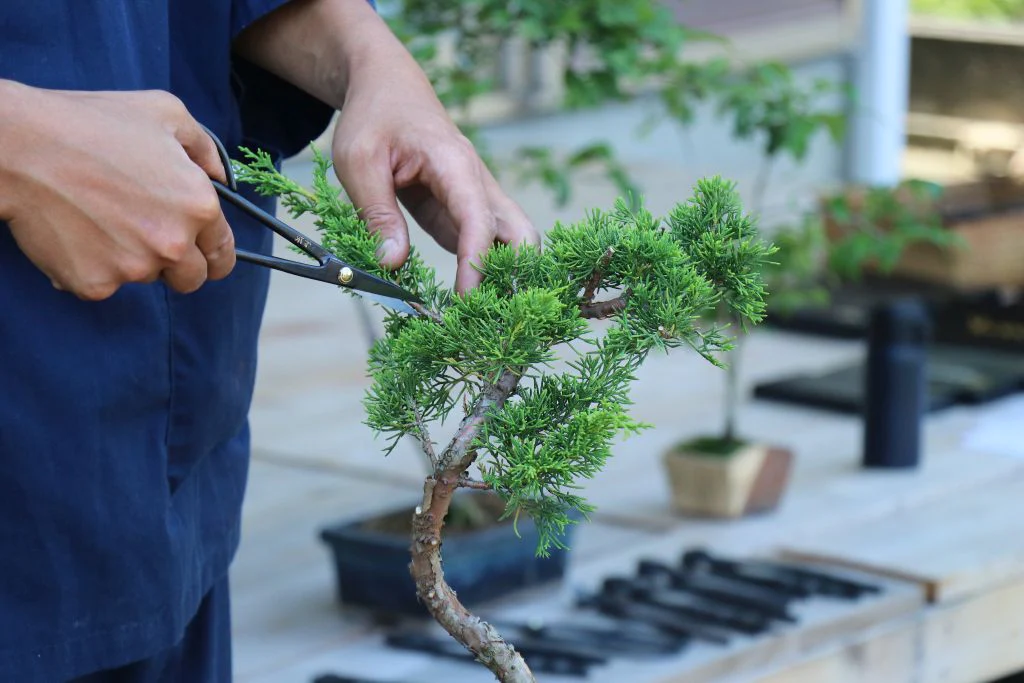
Wiring is a common technique used to shape and style juniper bonsai trees. Use anodized aluminum or copper wires to gently bend and position the branches, taking care not to damage the bark. Remove the wires after 6-12 months to prevent scarring or constriction.
Fertilizing and Pest Management
Juniper bonsai trees require regular fertilization to maintain their health and vigor. Use a balanced, slow-release fertilizer formulated specifically for bonsai trees or conifers. Apply the fertilizer during the growing season, following the product’s instructions.
While generally resilient, juniper bonsai trees can be susceptible to pests like spider mites, aphids, and scale insects. Regular inspections and prompt treatment with appropriate insecticidal soaps or horticultural oils can help prevent infestations. Additionally, fungal diseases like juniper blight or tip dieback can occur, which may require the application of fungicides or pruning off affected areas.
Styling and Display Ideas
One of the most rewarding aspects of cultivating a juniper bonsai tree is the opportunity to explore various styling techniques. From formal upright styles to cascading or semi-cascade forms, the possibilities are endless. You can also experiment with creative displays by incorporating unique bonsai pots, complementary accent plants, or natural elements like rocks or driftwood.
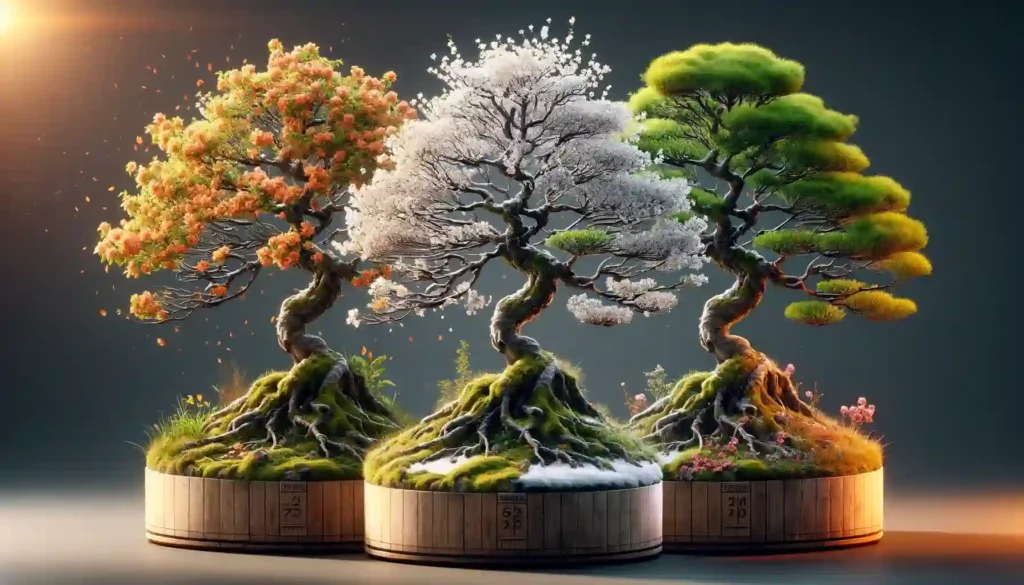
When displaying your juniper bonsai tree, consider its placement and lighting to showcase its beauty to the fullest. Rotate the tree regularly to promote even growth and prevent one-sided development. With patience and dedication, you can create a true work of living art that will bring joy and serenity to your living space.
People Also Ask:
What is the best juniper species for beginner bonsai growers?
For beginners, the Juniperus procumbens (Japanese Garden Juniper) and Juniperus chinensis (Chinese Juniper) are excellent choices due to their versatility and relative ease of care.
How often should I water my juniper bonsai tree?
During the growing season, water your juniper bonsai tree when the soil surface becomes slightly dry, ensuring the soil is evenly moist but not waterlogged. In winter, reduce watering frequency.
Can juniper bonsai trees be grown indoors?
Yes, juniper bonsai trees can be grown indoors, but they require ample sunlight (at least 4-6 hours of direct light per day) and proper humidity levels. Consider supplemental lighting and a humidity tray or humidifier.
How do I prune and shape my juniper bonsai?
Regular pruning and wiring are essential for shaping your juniper bonsai. Use sharp bonsai scissors or concave cutters to prune back unwanted growth, and employ wiring techniques to gently bend and position the branches into the desired form.
What are the common pests and diseases affecting juniper bonsai trees?
Common pests include spider mites, aphids, and scale insects, while fungal diseases like juniper blight or tip dieback can also occur. Regular inspections and appropriate treatments with insecticidal soaps, horticultural oils, or fungicides can help prevent and manage these issues.
By following this comprehensive guide and addressing the common questions and concerns, you’ll be well-equipped to embark on the rewarding journey of cultivating a beautiful and healthy juniper bonsai tree. With patience, dedication, and the right care, you can create a living work of art that will bring joy and natural beauty to your living space.

